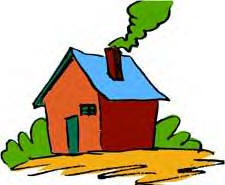Definition:
* Bleeding from 1 or both nostrils
* No known injury
Causes:
• Nosebleeds are common because of the rich blood supply of the nose. Common causes include
– Dryness of the nasal lining (eg, from forced air furnace in winter)
– Antihistamines (Reason: they also dry the nose)
– Vigorous nose blowing
– Ibuprofen (eg, Advil) and aspirin (Reason: increase bleeding tendency)
– Suctioning the nose can sometimes cause bleeding
– Picking or rubbing the nose
– Predisposing factors that make the nasal lining more fragile (eg, nasal allergies, colds, sinus infections)
 Call 911 Now (Your Child May Need an Ambulance) If:
Call 911 Now (Your Child May Need an Ambulance) If:
Fainted, or too weak to stand
Call Your Doctor Now (or in Alberta, Canada call 780-408-LINK) If:
* You think your child has a serious injury
* Bleeding does not stop after 10 minutes of direct pressure applied correctly and tried twice
* New skin bruises or bleeding gums not caused by an injury are also present
* Large amount of blood has been lost
Call Your Doctor Within 24 Hours (Between 9:00 am and 4:00 pm) If:
You think your child needs to be seen
Call Your Doctor During Weekday Office Hours If:
* You have other questions or concerns
* Child is younger than 1 year
* New-onset nosebleeds are occurring frequently
* Hard-to-stop nosebleeds are a recurrent chronic problem
* Easy bleeding present in other family members
Parent Care at Home If:
Mild nosebleed and you don’t think your child needs to be seen
 Home Care Advice for Nosebleeds:
Home Care Advice for Nosebleeds:
1. Reassurance:
* Nosebleeds are common
* You should be able to stop the bleeding if you use the correct technique
2. Apply Pressure:
* Gently squeeze the soft parts of the lower nose against the centre wall for 10 minutes. This should apply continuous pressure to the bleeding point.
* Use the thumb and index finger in a pinching manner
* If the bleeding continues, move your point of pressure
* Have your child sit up and breathe through the mouth during this procedure
* If it re-bleeds, use the same technique again.
3. Insert Gauze:
* If pressure alone fails, insert a gauze wet with a few decongestant nose drops (eg, nonprescription Afrin) (Reason: the gauze helps to apply pressure and nose drops shrink the blood vessels).
* If not available or your child is younger than 1 year, use petroleum jelly applied to gauze.
* Repeat the process of gently squeezing the lower soft parts of the nose for 10 minutes.
4. Prevent Recurrent Nosebleeds:
* If the air in your home is dry, use a humidifier to keep the nose from drying out
* Apply petroleum jelly to the centre wall of the nose twice a day to promote healing
* For nose blowing, blow gently
* For nose suctioning, don’t put the suction tip very far inside. Also, move it gently.
* Avoid aspirin and ibuprofen (eg, Advil) (Reason: increase bleeding tendency)
5. Expected Course: More than 99% of nosebleeds will stop following 10 minutes of direct pressure if you press on the right spot. After swallowing blood from a nosebleed, your child may vomit a little blood or pass a dark stool tomorrow.
6. Call Your Doctor If:
* Unable to stop bleeding with 20 minutes of direct pressure
* Your child becomes worse
Based on recommendations/advice in “My Child is Sick; Expert Advice for Managing Common Illnesses and Injuries”, 14th Edition, by Barton D. Schmitt
